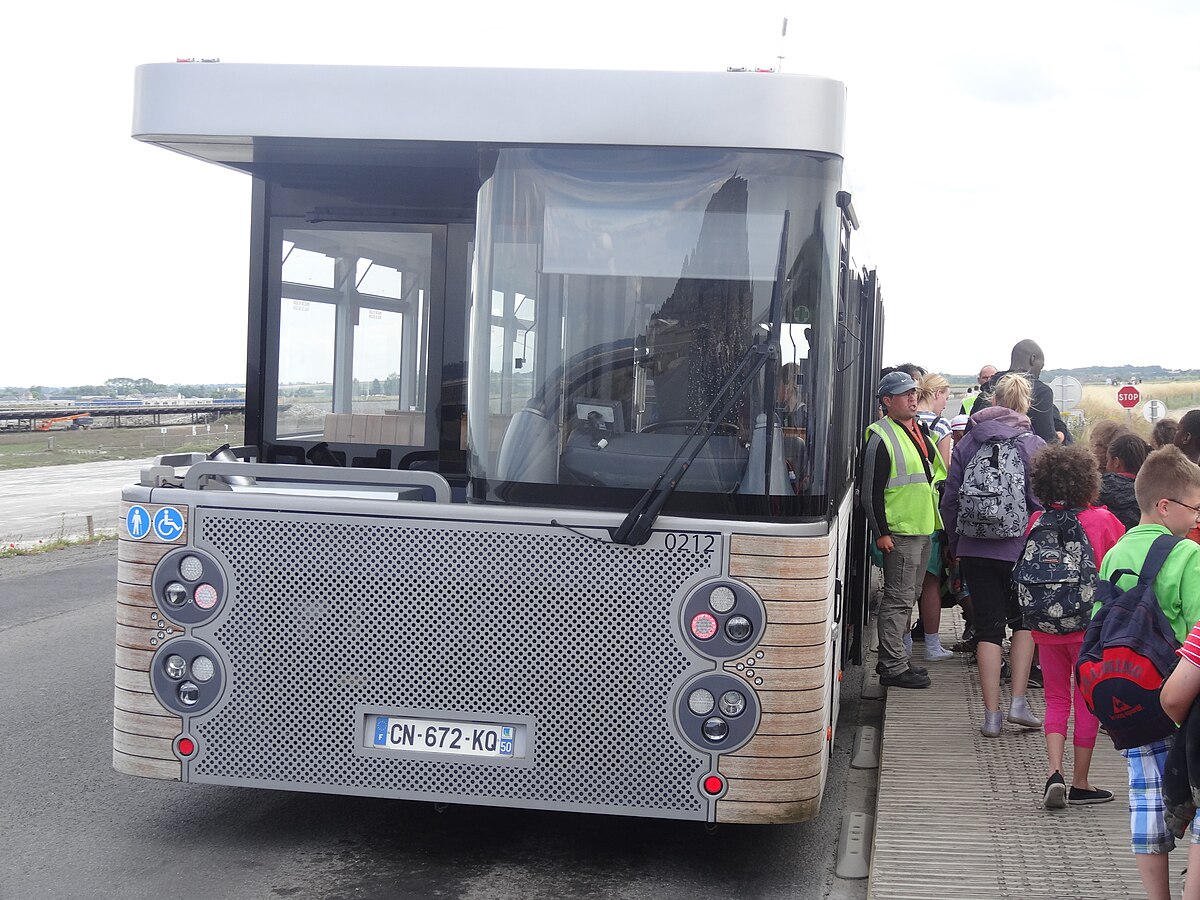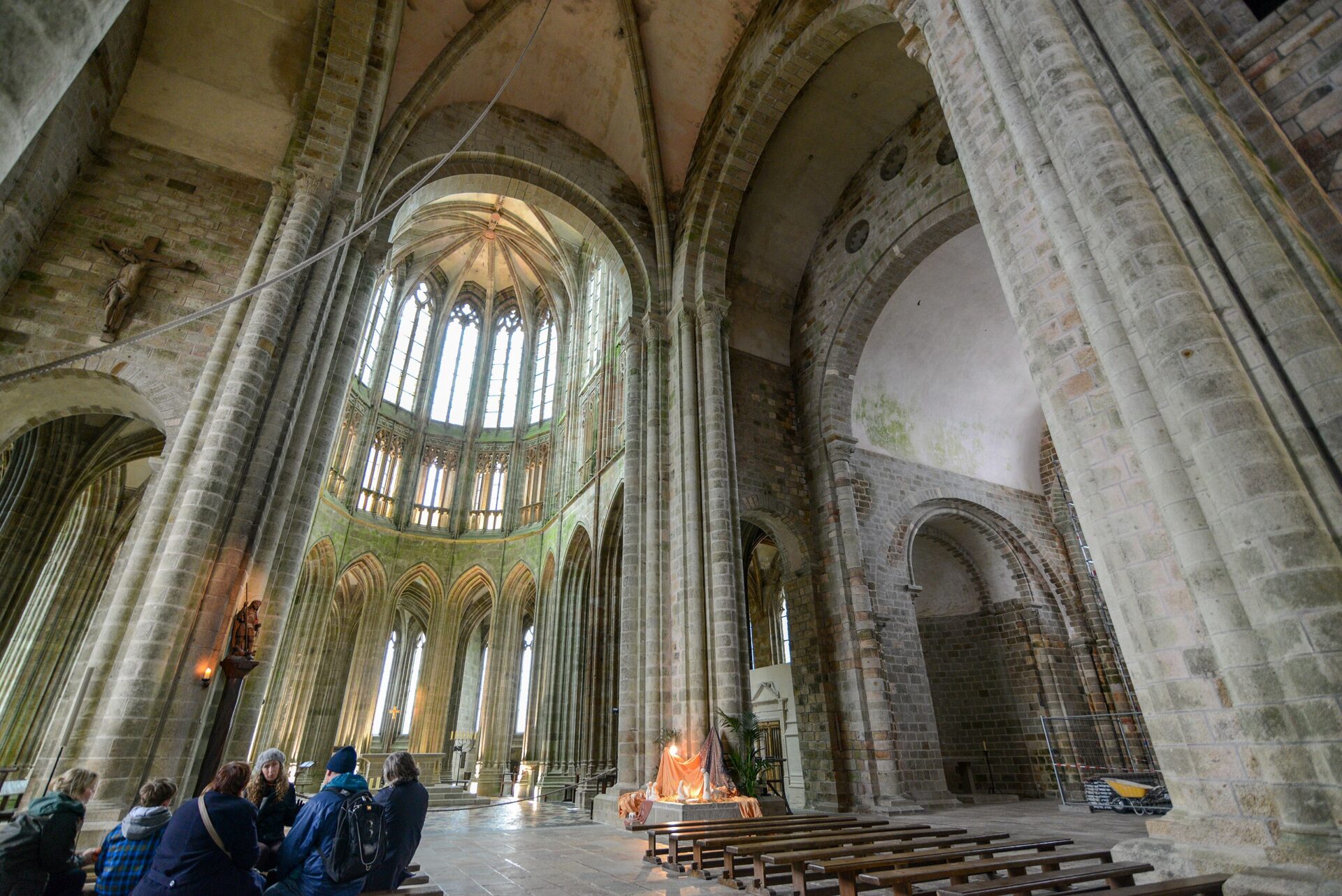Standing on the coastal road of Normandy, I caught my first glimpse of Mont Saint-Michel rising from the sea like something from a fairytale. This tidal island topped with a gravity-defying abbey is truly one of France’s most spectacular sights.
The unique 17-acre island offers visitors an unforgettable experience that should be on every traveler’s bucket list.
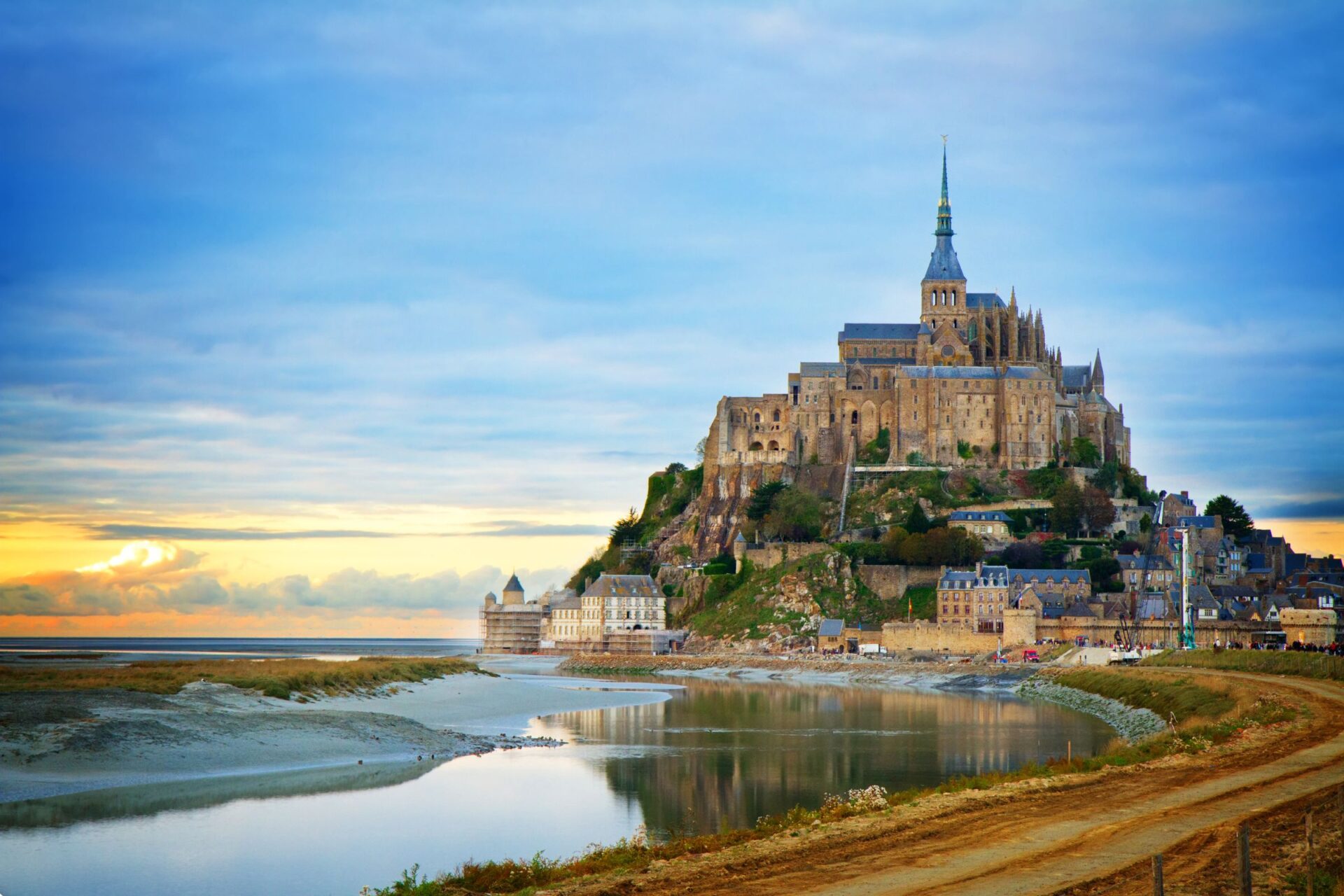
My journey to this medieval wonder last summer was everything I’d hoped for and more. As I walked across the bridge connecting the mainland to the island, the abbey’s spire seemed to pierce the clouds above.
The narrow winding streets, ancient stone buildings, and stunning views of the surrounding bay created a magical atmosphere unlike anywhere else in France.
Planning your visit takes some consideration, as the abbey is open from 9am to 7pm during summer months (May through August) and 9:30am to 6pm the rest of the year. I’d recommend arriving early to beat the crowds and experience the island’s serene beauty.
Walking through the magnificent abbey halls and gazing out across the bay at high tide was a highlight of my French adventures.
Planning Your Visit to Mont Saint-Michel
Visiting Mont Saint-Michel requires some preparation to make the most of your experience. I’ve gathered essential information about timing, transportation options, and accommodation to help you plan a stress-free trip to this magnificent island abbey.
Best Time to Visit
I found that spring (April-May) and fall (September-October) offer the perfect balance of manageable crowds and pleasant weather. Summer brings the largest number of tourists, especially in July and August.
If you want the magical experience of seeing the abbey without hordes of visitors, consider arriving early in the morning (before 9 AM) or staying until evening when day-trippers leave.
Winter visits can be wonderfully atmospheric with fewer tourists, though some businesses may have limited hours. The tide schedule is worth checking too—seeing the island completely surrounded by water during high tide is breathtaking.
I recommend planning your visit on a day when high tide occurs during daylight hours for the most dramatic views.

How to Get to Mont Saint-Michel
From Paris, I took a train to Rennes (2 hours), then caught a dedicated shuttle bus (1.5 hours) directly to Mont Saint-Michel. The shuttle costs about €15 one-way and runs several times daily.
If you’re driving, follow signs to the designated parking area on the mainland. Parking costs €14.90 for 24 hours. From there, free shuttle buses (called “Passeurs”) run frequently to take you to the Mont. The shuttle stop is just a short walk from the parking lots.
Other options include:
- From Normandy cities: Regular buses connect from Caen and other nearby towns
- By bicycle: Well-marked cycling routes lead to Mont Saint-Michel
- Organized day trips: Available from Paris, Bayeux, and other tourist hubs
Where to Stay
I highly recommend staying overnight on or near Mont Saint-Michel. After day visitors leave, the island becomes peaceful and magical.
There are a handful of hotels on the Mont itself, including La Mère Poulard and Auberge Saint-Pierre, but they’re quite expensive.
More affordable options can be found in nearby villages like Pontorson (about 9 km away) and Avranches. I stayed at a charming B&B in Pontorson and used the shuttle service to reach the Mont.
If you’re on a tight budget, consider staying in Rennes and making a day trip. However, this means missing the enchanting evening atmosphere when lights illuminate the abbey against the night sky. For the full experience, spending at least one night in the area is worth every penny.
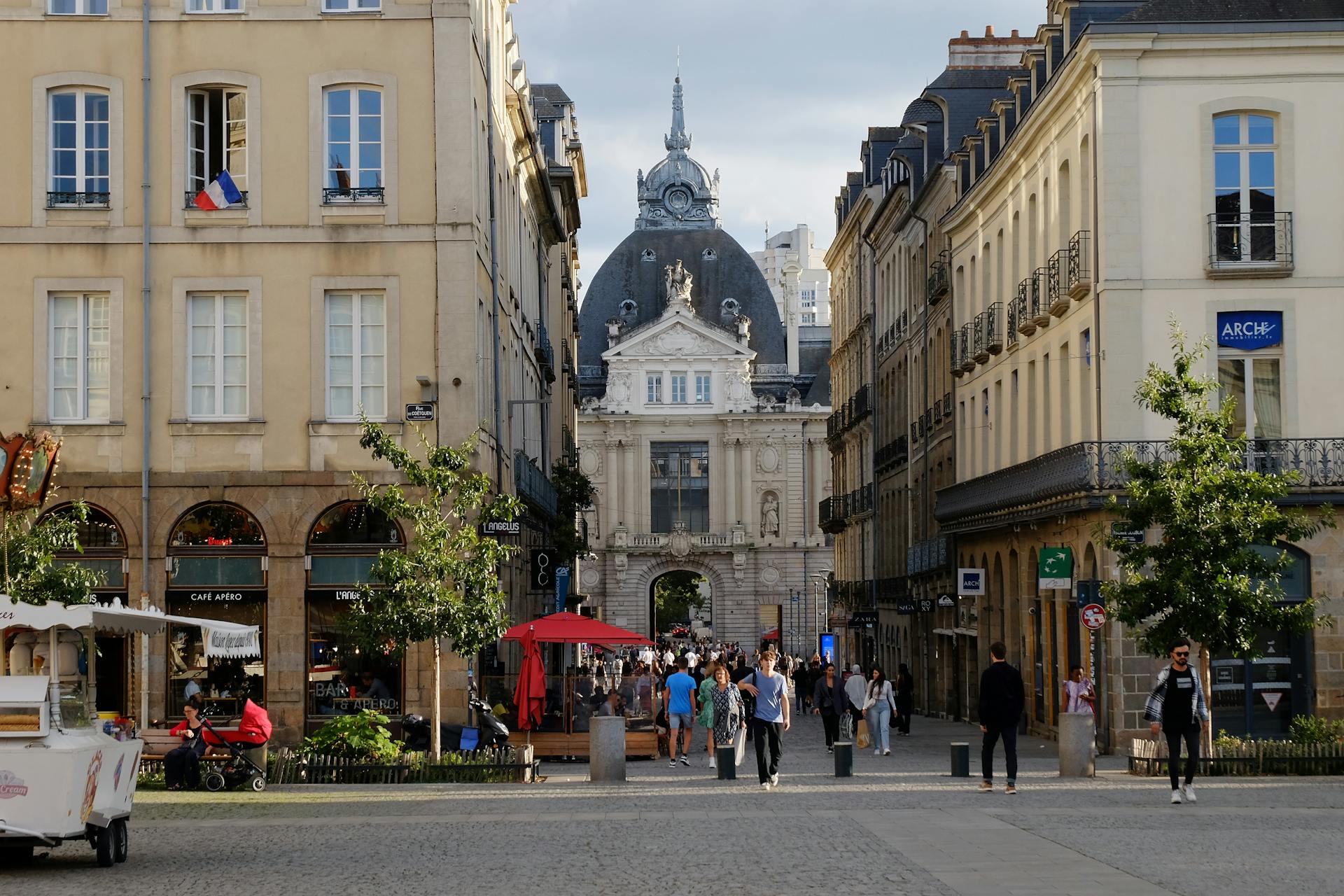
The History and Significance of the Abbey
The ancient abbey of Mont Saint-Michel stands as one of France’s most remarkable historical treasures, with roots dating back over 1,300 years. Its stone walls have witnessed centuries of religious devotion, intellectual pursuits, and even served as a formidable prison.
The Origin and Growth of the Abbey
The story of Mont Saint-Michel begins in 708 when Archangel Michael reportedly appeared three times in a dream to Bishop Aubert. This divine intervention sparked the creation of the first sanctuary dedicated to the archangel.
In 966, a Benedictine abbey was founded on the site, transforming the rocky island into a center of religious life.
During the medieval period, the abbey flourished as a renowned center of learning. I was amazed to learn how it attracted Europe’s greatest minds and manuscript illuminators.
The monks built impressive structures that climbed higher and higher on the rocky mount.
What struck me most was how the abbey evolved through different architectural styles. As I wandered through, I could see remnants of Romanesque elements alongside Gothic features, showing the abbey’s growth over centuries.
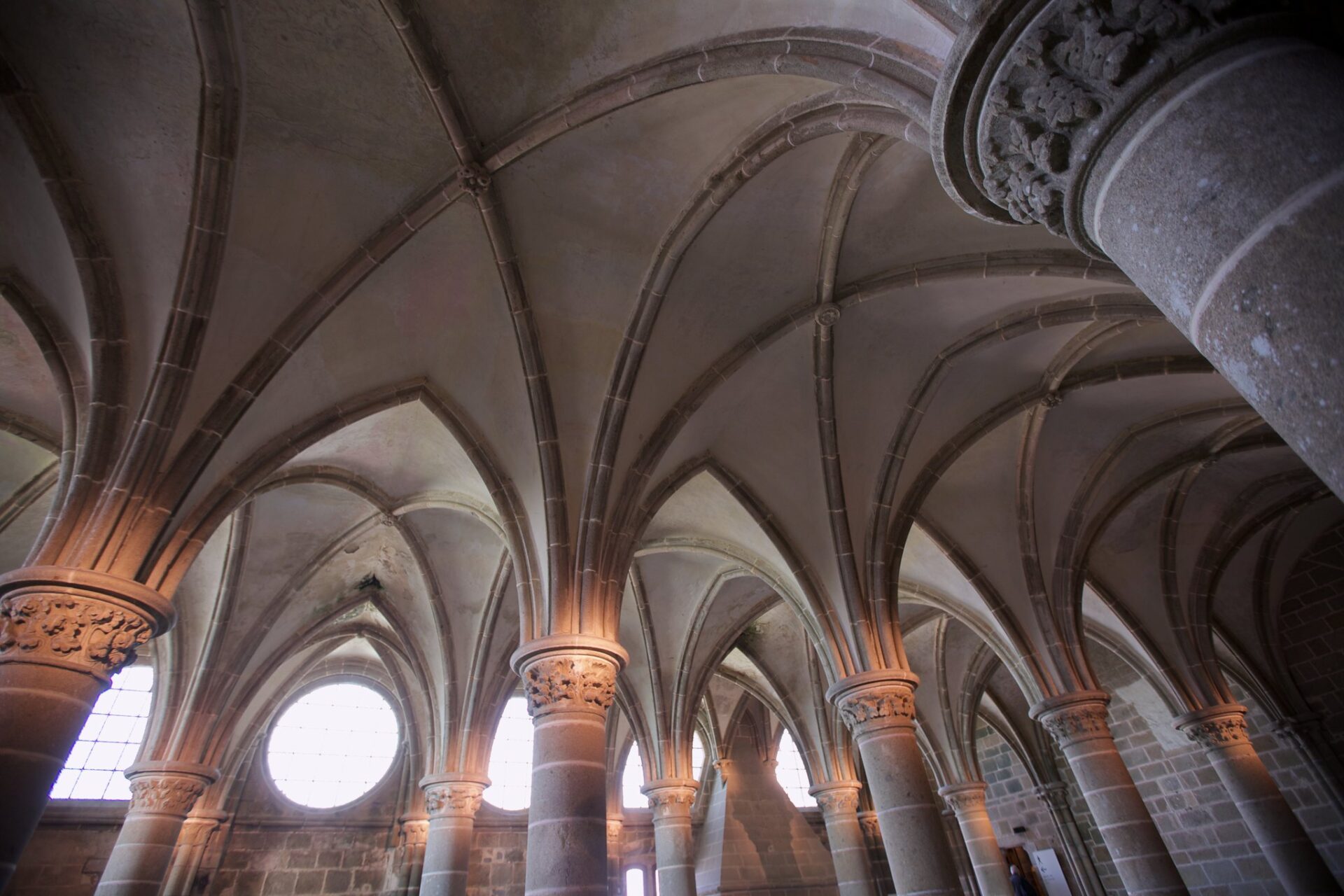
Mont Saint-Michel as a Pilgrimage Site
Mont Saint-Michel quickly became one of Christianity’s most important pilgrimage destinations. Thousands of faithful travelers journeyed across medieval Europe to reach this sacred island in Normandy. For pilgrims, reaching the abbey meant a spiritual triumph and divine blessing.
I felt a connection to these ancient travelers as I climbed the same narrow pathways to reach the abbey. The journey itself was considered part of the pilgrimage experience.
Many pilgrims would wait for low tide to cross the bay on foot—a dangerous journey that claimed many lives.
Today, Mont Saint-Michel continues its legacy as a spiritual site. Now recognized as a UNESCO World Heritage site, it attracts over 3 million visitors annually. During my visit, I noticed modern pilgrims mixed with tourists, still seeking connection with the divine or simply admiring the abbey’s breathtaking beauty.
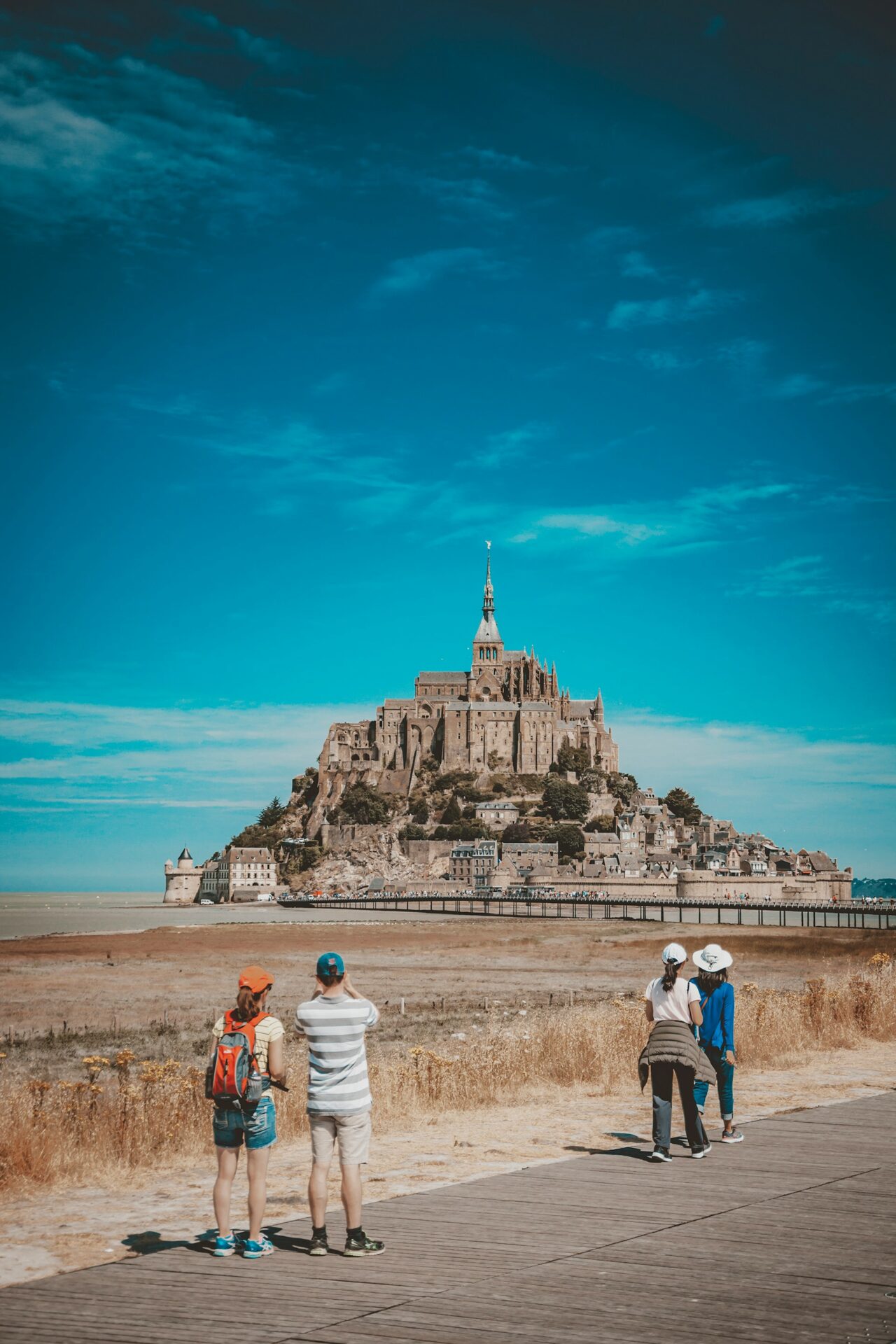
Exploring the Island and Its Architecture
Mont Saint-Michel offers a fascinating blend of natural beauty and human ingenuity. The island’s architecture showcases centuries of remarkable construction techniques that have withstood the test of time and tides.
The Marvels of Medieval Engineering
Walking around Mont Saint-Michel, I was amazed by the clever medieval engineering solutions that make this place possible. The abbey sits atop a granite outcrop that rises dramatically from the bay, reaching an impressive 92 meters above sea level.
The builders had to solve unique challenges due to the island’s limited space. They created ingenious supports and counterweights to distribute the massive structure’s weight across the rocky mount.
What impressed me most was how they managed water resources. The monks designed a sophisticated rainwater collection system that fed cisterns throughout the abbey.
They even created a hydraulic wheel system to bring supplies up the steep pathways.
The fortress-like walls surrounding the mount aren’t just decorative—they protected the abbey from both invaders and the powerful tides of the Couesnon River that surrounds the island.
The Great Gothic Structures
The abbey church stands as the crown jewel of Mont Saint-Michel’s architecture. Its spire reaches toward the heavens, topped with a statue of Saint Michael that can be seen from miles away.
I spent hours admiring the ribbed vaults and flying buttresses that define the Gothic style here. These engineering features allow for the massive windows that flood the interior with light.
The cloister garden particularly captivated me. It sits at one of the highest points of the abbey, providing monks a peaceful place for reflection with stunning views of the bay.
The refectory, where monks once took their meals, features remarkable acoustics. Our guide demonstrated how the reader’s voice could carry throughout the room while others ate in silence.
The Knights’ Hall showcases massive columns supporting the structure above. This impressive room once welcomed pilgrims from across Europe.
The Quaint Streets of La Grande Rue
La Grande Rue is the main street winding through Mont Saint-Michel’s medieval village. I found it charming despite being lined with souvenir shops and restaurants. The ancient buildings lean in slightly, creating a unique atmosphere.
The street follows the same path pilgrims took centuries ago. Each stone step has been worn smooth by millions of feet over hundreds of years.
I recommend exploring early morning or evening to avoid the largest crowds.
Several buildings along the street date back to the 15th and 16th centuries. I spotted fascinating architectural details like carved door frames and ancient shop signs that hint at the village’s rich history.
Don’t miss the parish church along this route. Though modest compared to the abbey above, it contains beautiful religious artifacts important to local residents who still call this tidal island home.
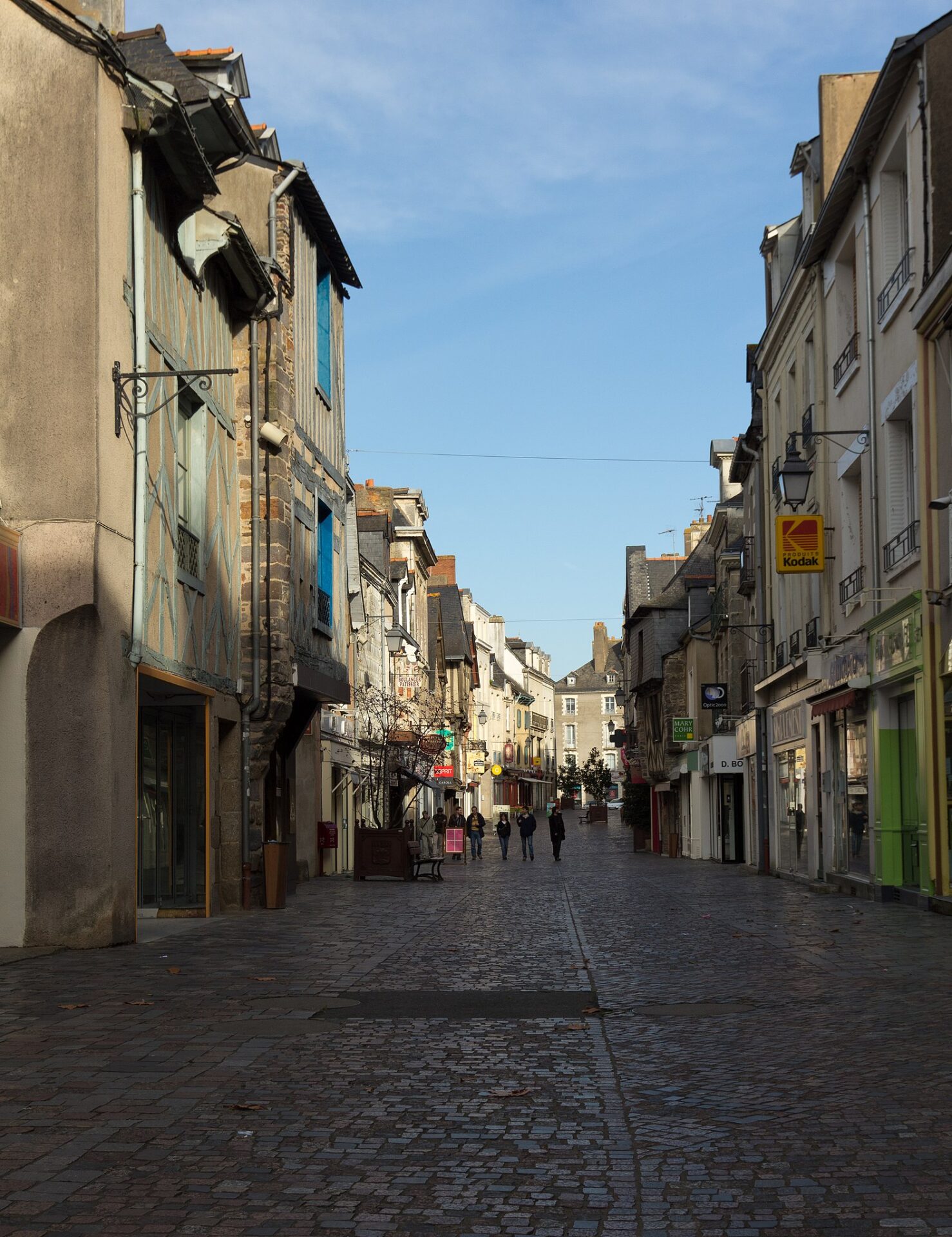
Practical Tips for an Enjoyable Visit
Mont Saint-Michel requires some planning to fully appreciate its magic. I’ve discovered several strategies that can transform your visit from good to unforgettable.
Navigating the Crowds
I found that timing is everything when visiting this popular destination. Arriving early in the morning (before 9 AM) or later in the afternoon (after 3 PM) helped me avoid the worst of the tourist crush. During peak season, the narrow main street becomes packed with visitors.
Don’t limit yourself to the main street! One of my best decisions was climbing up on the ramparts instead. These walls offer a less crowded path to the abbey while providing stunning views of the bay.
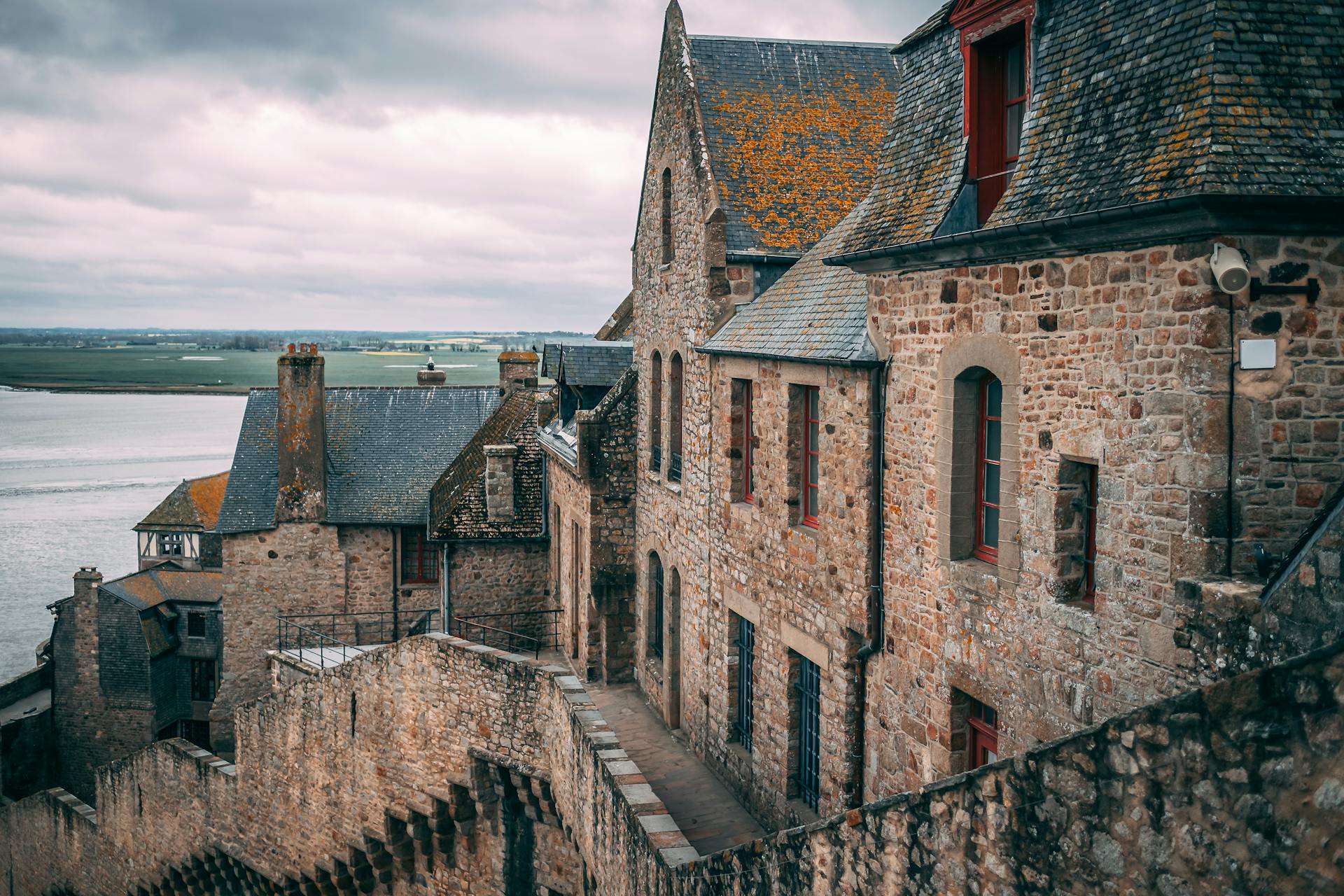
Consider visiting during shoulder seasons (April-May or September-October) when crowds thin but weather remains pleasant. Weekdays are noticeably less busy than weekends.
For a truly peaceful experience, I stayed overnight on the island. After day-trippers left, I had the magical evening atmosphere almost to myself.
Experiencing the High Tide Phenomenon
Witnessing Mont Saint-Michel surrounded by water is truly spectacular. I checked tide schedules in advance through the official website to plan my visit during a high tide day.
The most dramatic views happen during “spring tides” (highest tides of the month), especially during full or new moons. These create the famous effect where the island appears completely cut off from the mainland.
For safety reasons, I never attempted to walk around the island during tide changes. The water comes in surprisingly fast – sometimes “at the speed of a galloping horse” as locals say.
I found the views from the abbey particularly breathtaking during high tide, when water surrounds the rocky island. The low tide reveals fascinating mudflats where guided walks are available.
Dining and Shopping on the Island
The island features several restaurants, though I discovered they can be quite expensive. La Mère Poulard is famous for its fluffy omelets, but prepare for both a wait and a higher bill than expected.
I saved money by packing a light picnic to enjoy on the ramparts with amazing views. For those who prefer restaurants, I found better value at establishments located just before crossing to the island.
Shops along the main street sell interesting souvenirs, but prices drop significantly in nearby mainland towns. The specialty cookies and buttery treats make delicious take-home gifts.
Water is surprisingly expensive on the island, so I brought my own refillable bottle. Many restaurants will fill it for free if you purchase food.
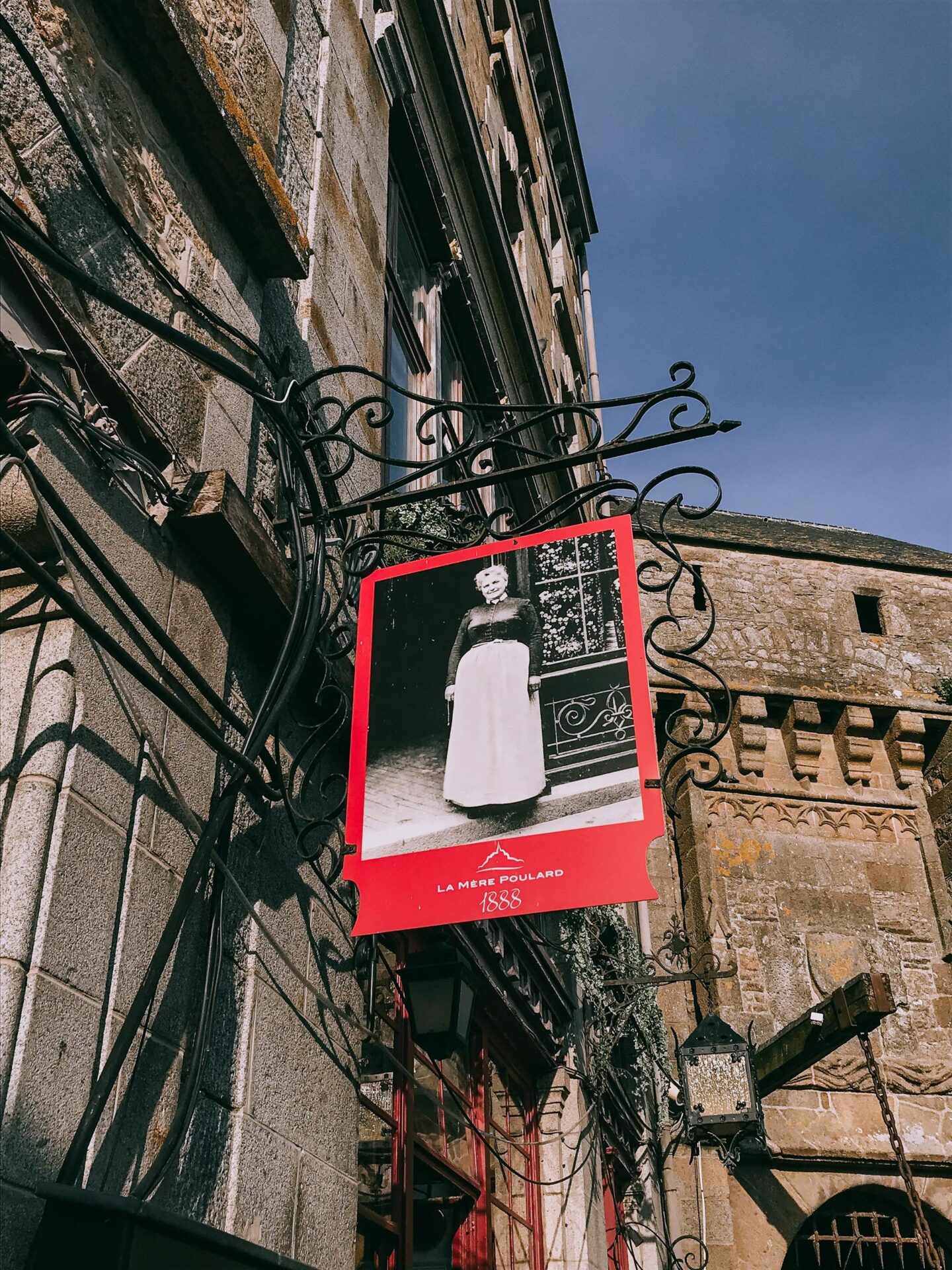
Beyond the Abbey: Discovering the Surrounding Region
While Mont Saint-Michel is breathtaking on its own, the surrounding region offers incredible experiences that many visitors miss. The Normandy and Brittany areas near the abbey are filled with charming towns, coastal beauty, and historical sites worth exploring.
Nearby Attractions and Towns
Saint-Malo captured my heart during my visit. This walled port city in Brittany (or Bretagne as locals call it) is just a 35-minute drive from Mont Saint-Michel. I spent hours walking atop the massive ramparts that surround the old town, watching waves crash against the walls during high tide.
The historic city of Bayeux makes for another wonderful day trip. It’s home to the famous Bayeux Tapestry depicting the Norman conquest of England. I found the medieval architecture throughout the town center absolutely charming.
Caen, with its imposing castle built by William the Conqueror, offers a glimpse into Normandy’s rich history. The Mémorial de Caen museum provided me with moving insights into D-Day and World War II.
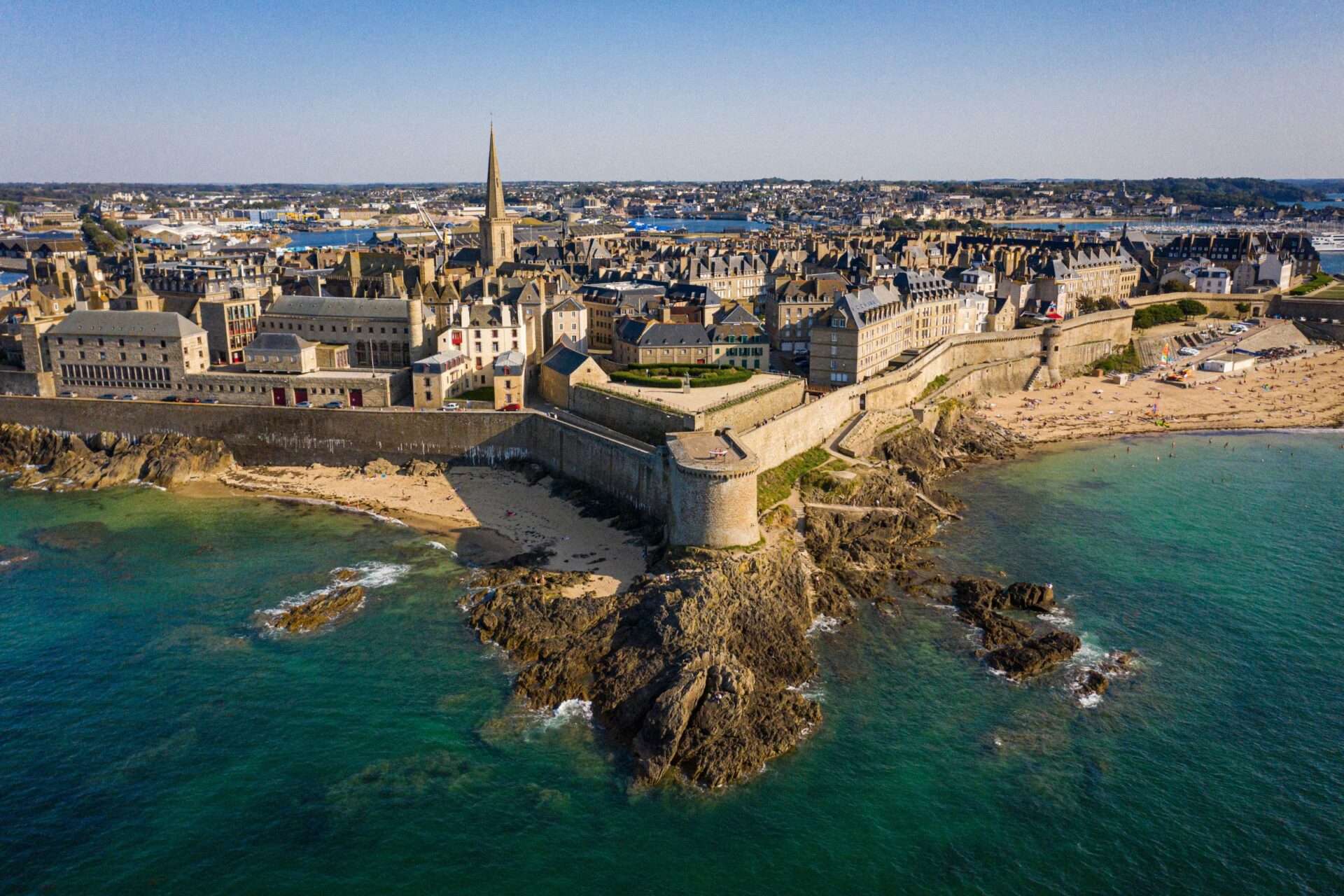
Excursions from Mont Saint-Michel
Taking a guided maringote (horse-drawn carriage) tour across the bay was truly unforgettable. These traditional wooden carriages allowed me to experience the unique coastal ecosystem. I also learned about local traditions from my knowledgeable guide.
For adventure seekers, guided walks across the bay at low tide are available. I joined one of these walks. Crossing the same path pilgrims have used for centuries was both thrilling and humbling. Important safety note: Never attempt bay crossings without a guide due to dangerous quicksand and rapidly changing tides!
Cycling through the countryside gave me a different perspective on the region. Several well-marked bike routes connect Mont Saint-Michel to nearby villages. Rental shops are available in most towns.
Day trips to Breton fishing villages like Cancale (famous for its oysters) provided a delicious taste of local cuisine. I spent a wonderful afternoon sampling fresh seafood while overlooking the water.

